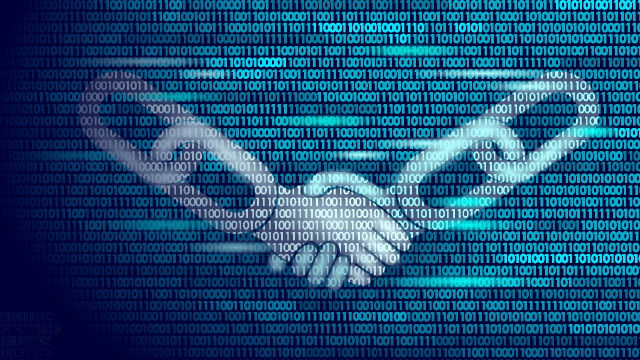
MANILA, Philippines – Blockchain, propelled to the mainstream by the rise of its most popular application Bitcoin, is almost inescapable now, touted by an army of advocates as the single greatest technological revolution since the World Wide Web in the ‘90s.
Brock Pierce – a lively advocate for the technology, blockchain entrepreneur, and also the young Gordon Bombay, the protagonist in the ‘90s Disney film The Mighty Ducks – certainly believes so. Pierce, along with a co-advocate Serry Osmeña, were recently in the Philippines, talking to various stakeholders in the local blockchain scene to offer education, including the media.
Pierce says the problem with blockchain now, as far as mass understanding and adoption is concerned, is that it could be a tricky concept to grasp. It feels nebulous. Decentralized systems. Distributed ledgers. Immutable, transparent records. Blockchain and the terms surrounding it, are a mouthful; the technicalities, intimidating and unwelcoming, especially to the end user who just wants to maybe use it to make life a little bit easier like smartphones do.
It’s tough to understand things we can’t hold in our hands. Consider the internet and the World Wide Web – more people can define it as the technology that enables us to send emails, chat with friends, and post on social media accounts, rather than define its structure and protocols. Understanding came with usage.
So Pierce and Osmeña have a simple suggestion: dip your toes into blockchain in its current, most readily usable form, cryptocurrency. To be more specific: Get a cryptocurrency wallet, and practice sending and receiving cryptocurrencies – digital money, essentially. The hope is, with usage, a more practical, useful understanding follows, and later on, wider adoption. And it pays to start getting acquianted with the technology now as Pierce says that blockchain will be big in the Philippines.
Money remittances
Pierce believes that the Philippines will be a key, if not the most important, market for blockchain, and that’s because of the amount of remittances coming from overseas Filipino workers (OFWs). Blockchain money has a ready purpose to serve in the Philippines, he says. Instead of sending money through traditional means, blockchain-enabled platforms could serve as a faster way to transfer money while cutting down on fees charged by the banks or money transfers.
Blockchain has a ways to go, however, as the debate on the real efficacy of blockchain versus traditional wire services and banks is still, primarily, unsettled.
Pierce also mentions that blockchain could one day tap the millions of Filipinos who remain unbanked, enhance financial inclusion, and enable more people to avail of financial tools such as loans, credit, and investment instruments traditionally provided by banks and other financial institutions.
As blockchain organizations such as the Blockchain Association of the Philippines, banks like Unionbank, and entrepreneurs such as Pierce and Osmeña attempt to set up a working blockchain environment here in the Philippines, there’s some incentive to get ahead of the curve, and educate oneself further about the technology, or just, start experimenting with a cryptocurrency now.
Online games and casino chips
The two, further simplifying the blockchain picture, provided two working examples with which cryptocurrencies can be compared to: videogame currency and casino chips. Online video games have their own in-game economy, Pierce says. Gamers seeking to buy new items for their character can either earn in-game money by playing or by buying in-game currency with real money. Regardless of the method, there is a trading of values occurring within the game. This is similar to transactions in a blockchain network, only a lot more secure given blockchain’s architecture.
In online video games, all that data about how much in-game money your character has is stored in the game’s central server, making it vulnerable to hacks or alteration. In blockchain, every node or computer in the blockchain network serves as a keeper of that record, verifying and authenticating a transaction with complicated mathematical computations. There is no one gatekeeper of the record; everyone in the network is.
Online gamers’ use of these currencies, says Pierce, can give them a leg up over other users who have not been exposed to this kind of digital money – just as the use of a cryptocurrency wallet now can help acclimate individuals to what the technology may be capable of.
Blockchain tokens, which store value within a blockchain network, is also similar to a casino chip, says Osmeña. It can be earned inside that blockchain network by methods assigned by that particular network. For example, a news platform on a blockchain can generate tokens for a news writer or news outfit, paid for by the audience with tokens bought using traditional money.
An advertising platform can serve ads to users, earning the users tokens that they can then exchange for free internet access, similar to what ODX, a subsidiary of local tech company Xurpas, proposes. There’s a value-creation loop.
In a similar way, a casino has its own value-creation system: a player can participate in the casino by buying chips with real money, and then putting those chips on the line for a potential reward – or loss, on the other hand.
The casino ascribes value to the chips, promising participants the ability to trade them in for real-money when they want to. Blockchain networks ascribe value to the tokens, promising to fulfill whatever its value is. Again, the value in those tokens is secured by the blockchain network, accurately verifying how many tokens is owed to whom.
It’s this security that separates blockchain networks from the internet in its current form today, Pierce says. Unlike the free and open internet, transactions are tracked and authenticated by an entire network of computers, immutable records are kept and are transparent.
It’s Web 3.0, the two say. It starts with cryptocurrencies and other blockchain-powered financial technologies, but the architecture can be adapted to other verticals including social media, video games, and journalism, to name a few.
